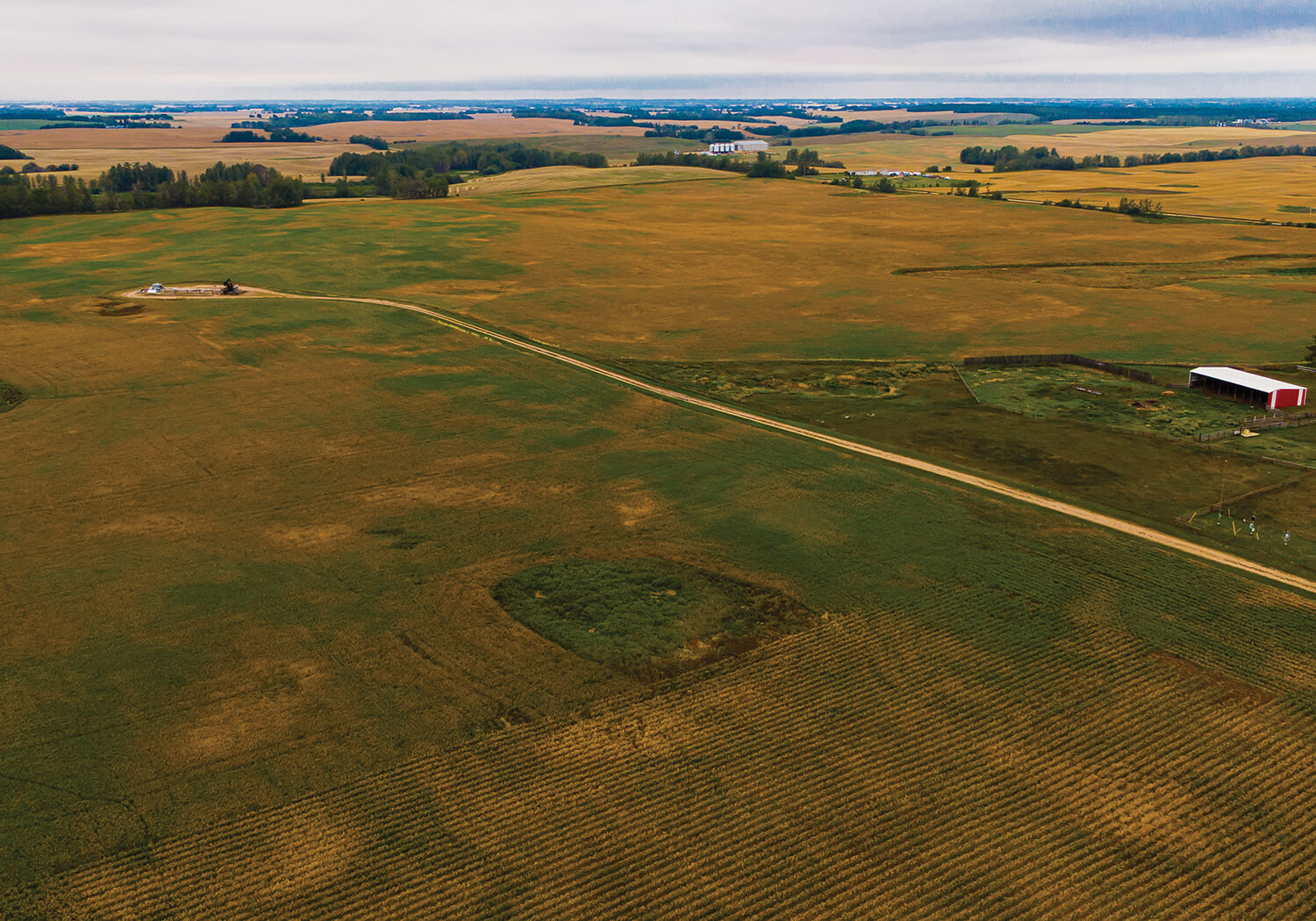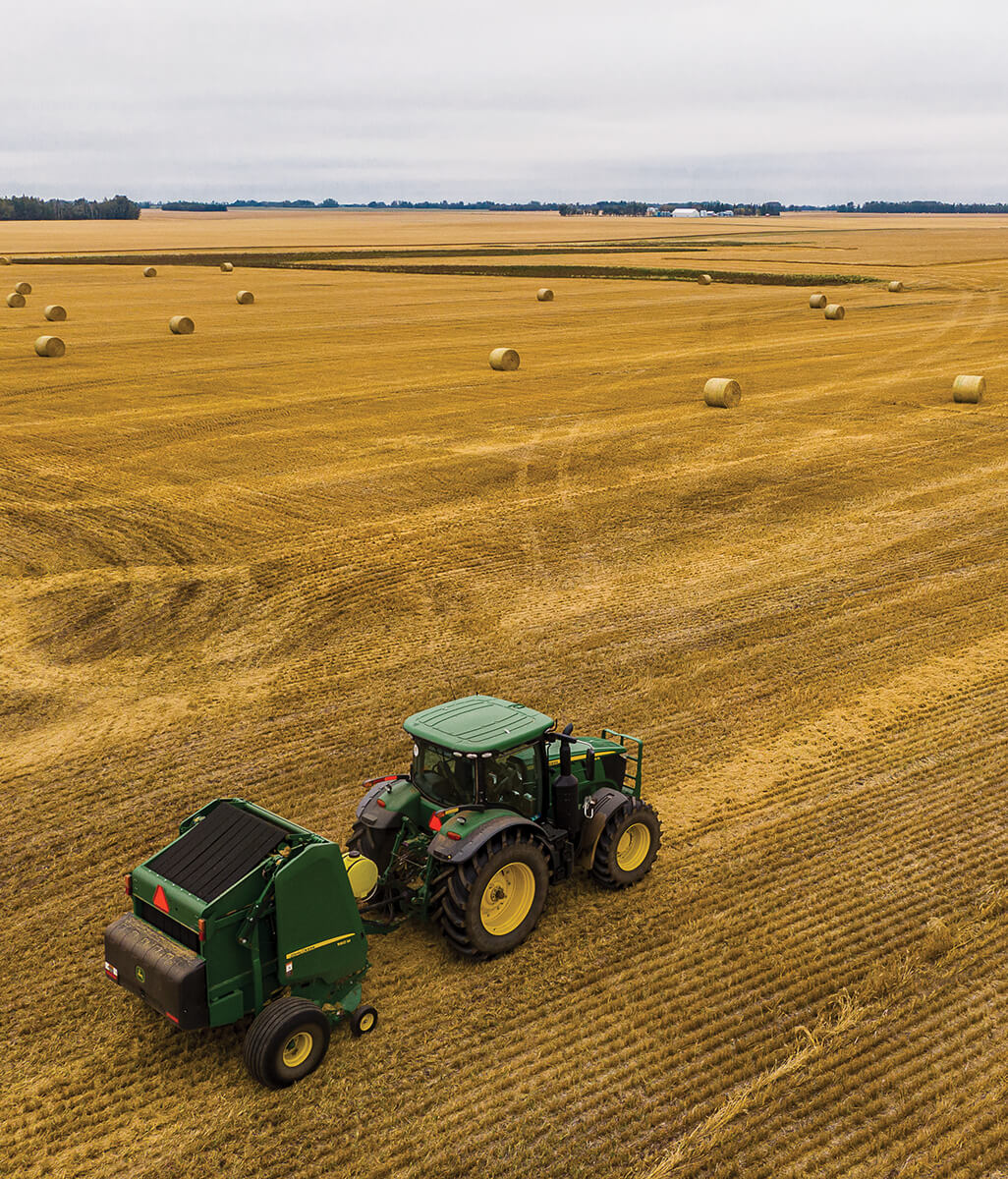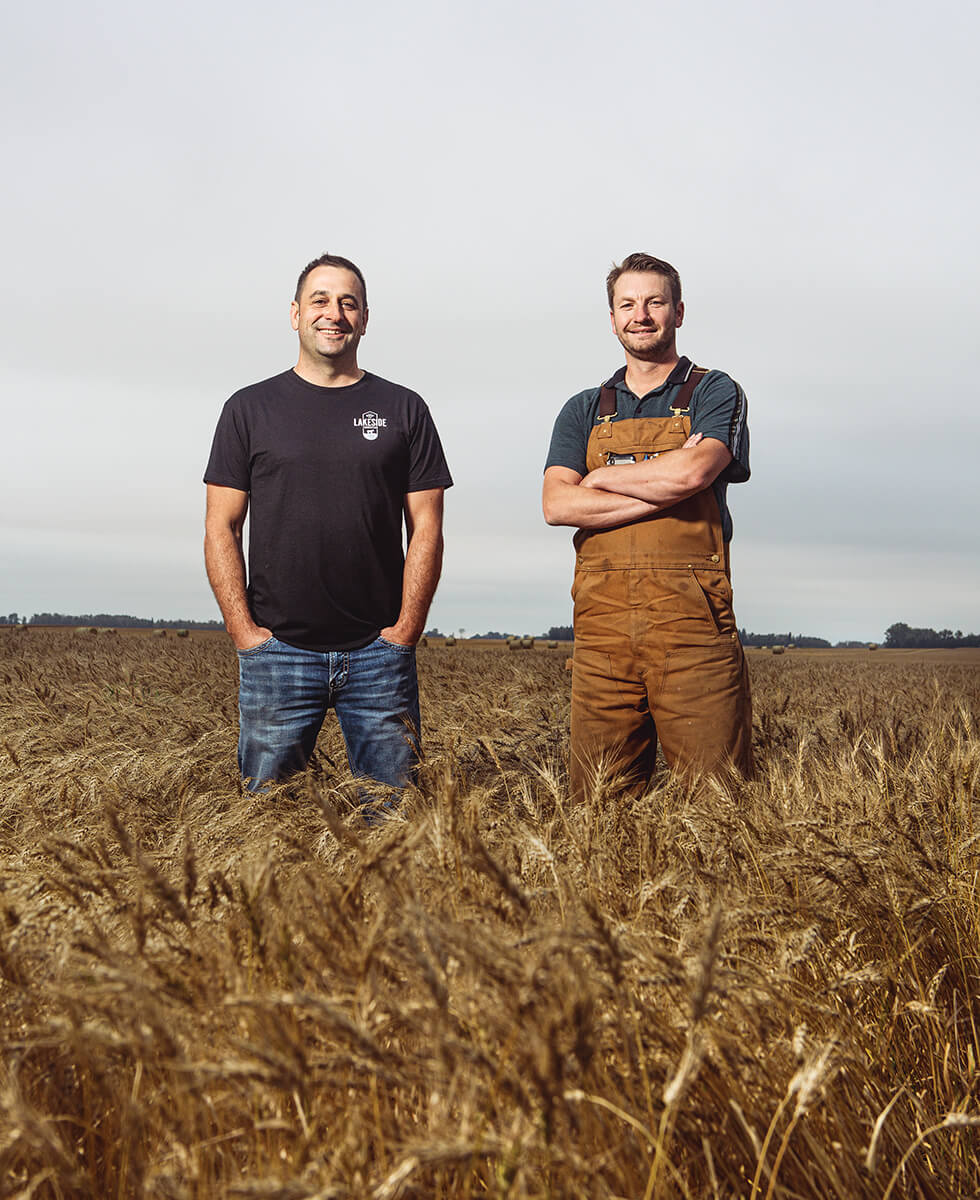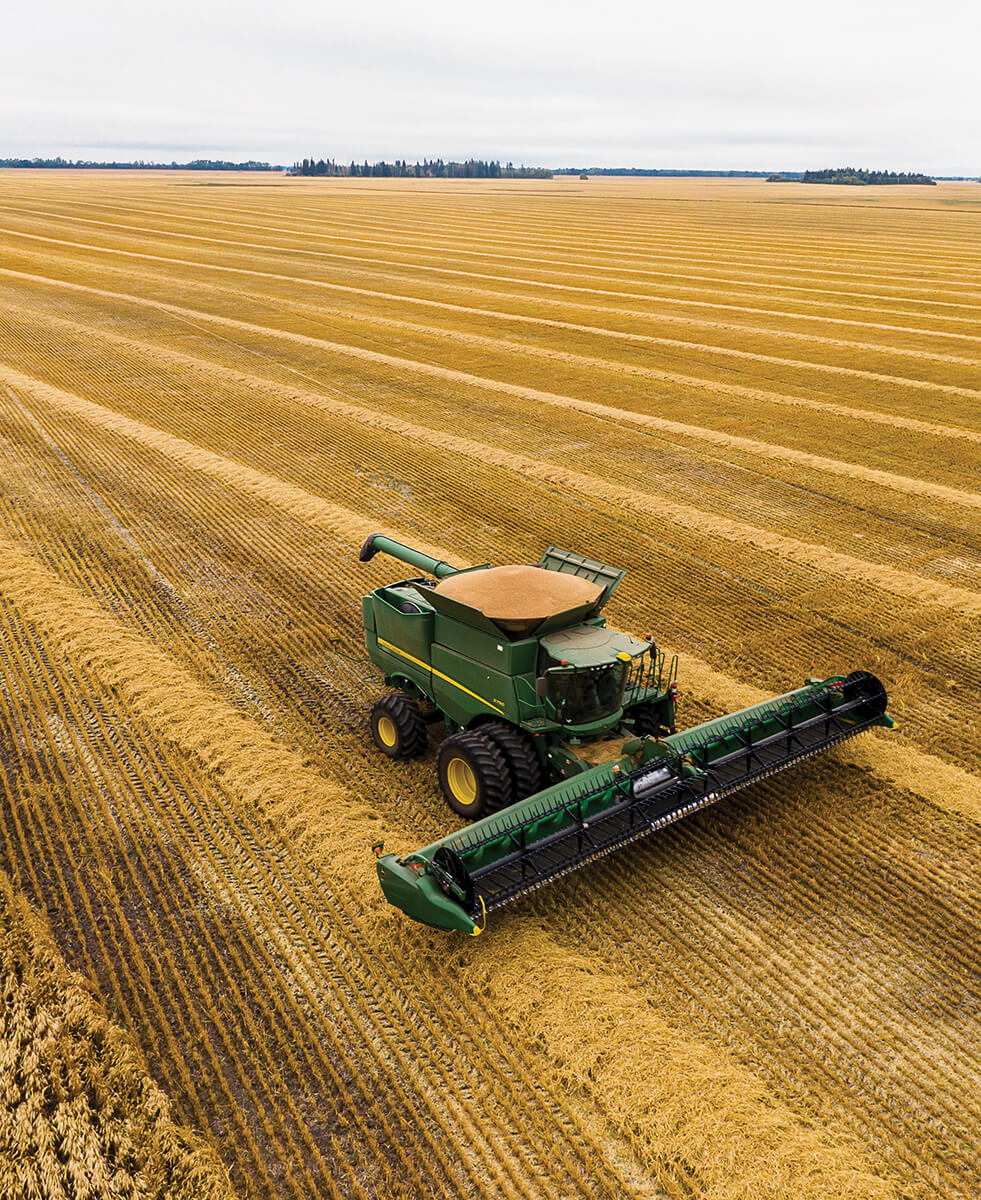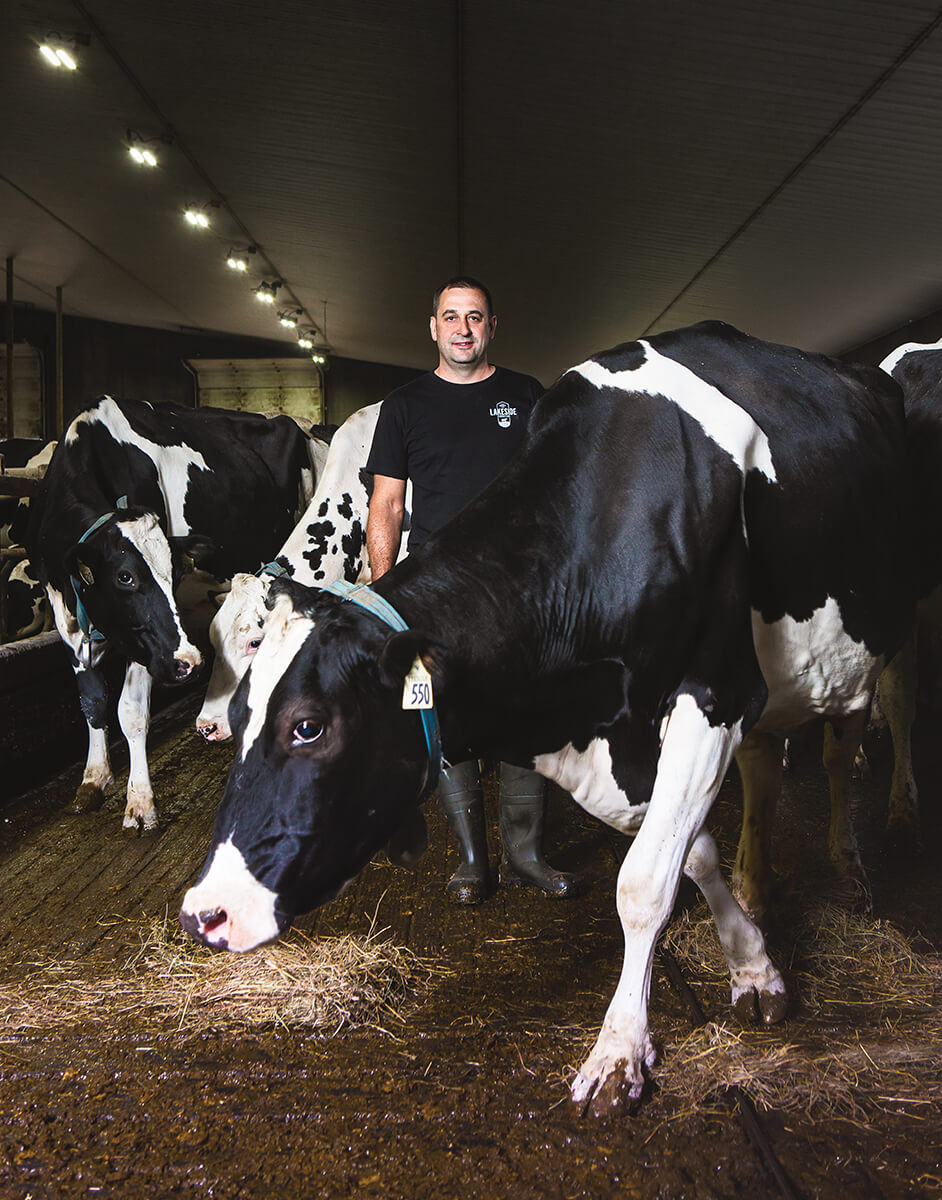Homes washed away in Germany. People in ferries escaped hellscape fires in Greece. Roads melted in India. All while British Columbia burned. Catastrophic, “once-in-an- X-number-of-years” weather events are now the norm. And while experts clarify it’s difficult to tie individual events to human activity, the overall trend is as obvious as an iceberg: Climate change is happening, and it’s our fault.
Globally, yearly climate change-related deaths are in the tens of thousands, for now, and the worst we’ve experienced in Edmonton are a few smoggy days and some hot, sleepless nights as smoke creeps over the prairies. But you don’t have to venture far past the city limits to meet people who are forced to be ahead of the climate change curve: Alberta farmers.
Tam Andersen has farmed her whole life — for the last 35 years, at Prairie Gardens near Bon Accord, 30 minutes north of the city. She studied horticulture, and keeps up to date on studies like the Intergovernmental Panel on Climate Change’s assessment that shows how our greenhouse gases warm the world. But she sees the effects each day she steps onto her land. “I have never seen it this dry for this long, ever,” she said. “Last year was equally horrible, because it was too wet and everything drowned. And the year before that we were in a drought as well. We’re living in this nasty little graph of peaks of valleys.”
There are many nasty little graphs out there. One NASA graph shows Earth’s historically stable output of carbon dioxide, which has never risen above 300 parts per million going back 800,000 years. Then it reaches 1950 and shoots straight up past 400, with no plateau in sight. A National Oceanic and Atmospheric Administration graph shows the hottest 20 years on record — going back to 1880 — have been in the last 22 years. That is backed by another NASA graph comparing energy sent from the sun and global surface temperature, with the two lines going in opposite directions since 1980, meaning the temperature increase is coming from our planet.
But, for Andersen, and farmers around the world (and anyone who likes eating food), the number that matters most immediately is precipitation. “Food grows where water flows,” she said. “Temperature can go up a few degrees and our production increases as long as there’s still water. But, if it’s a drought year like this, well, it’s a good wake-up call, in a way: We had the most beautiful crops when the season started. And now we have 20 per cent yield.”
As we talked one sunny August morning at Prairie Gardens, she paused to help a few early-bird customers check out some trees and peruse some perfectly tart crab apples, and suggested they take a train ride around the adorable farm. Her joy in sharing her life’s work with city folk was palpable, the only thing that compared to growing food itself. “One of the beautiful things we do here is connect people back to the land, put their feet firmly on the topsoil, and ground them on our planet. We educate and share our values with them, and they get to pick some vegetables and learn about food production and being self-sustainable, with the hope it leads to some further action down the line. Whether its guerrilla gardening in their neighbourhoods or planting sunflowers in their alleys to feed the bees, we’re sowing seeds of thought.”
“You can’t buy rain. But you can adapt and innovate.” Steele Perrett works for Jeff Nonay on his family’s farm, Lakeside Dairy, about 10 minutes northwest of Prairie Gardens, near Legal. At 21, Perrett started his own farm and grew it to 6,000 acres in 10 years. During that time came five years of agricultural disaster, starting in 2015. Because he started from scratch versus inheriting a family farm, and his crop insurance baseline was set during lean years, it put him out of business. He then chose to work at Lakeside because “Jeff thinks outside the box,” and Nonay hired him because “Steele is accelerating what we’re doing.”
What Lakeside’s been doing since 2000 is reading and reacting to the ever-changing environment. Both men see value in coming technologies that can keep costs down and carbon in the ground, but they have no interest in doing nothing — or the same thing — until they arrive. Nonay touted investing in high genomic heifers that produce milk more efficiently, crop rotation, mixing discarded drywall into compost and tilling as little as possible (in some cases not at all) to leave nutrient-rich, disease-dampening beds for next year’s crops as “low-hanging fruit” that farmers can already reach.
“I love the quote that says mankind owes its entire existence to six inches of topsoil and the fact that it rains occasionally. Because it’s massively out of our control, so we have to adapt, because we don’t know how much it’s going to rain,” Nonay said. “In many ways, it’s easy to adapt. You don’t need to make massive capital investments that require engineering expertise to operate. This year I’m looking at an average crop of potatoes, and a better-than-average crop of wheat in some of my fields. And I’m looking at crops that are disasters in a field three miles away. This year exposed just how fragile that balance is.”
Nonay also questioned things like the regulatory requirement that raw manure must be “incorporated” (mixed) into the soil, both to control odour and mitigate nitrogen loss. “So the challenging thinking is, what if we don’t do that? Is that nitrogen loss that I prevented as valuable as if I left it unworked and let the nutrients filter down? What kind of microorganisms and pathogens will thrive more in a thatch layer on top than they will in the soil? So that’s an unknown. And I haven’t seen the risk of that yet.”
If these farmers sound more like scientists than you expected, it’s because climate change has forced them to adapt. And, because Nonay doesn’t use crop insurance, much of Lakeside is a living lab on which Perrett can run intercropping experiments, where rows of peas sit next to canola or barley, the purposeful placement providing a natural pesticide as different diseases only affect certain plant species, and can’t jump rows.
As Perrett drove me around neighbouring acres, he pointed out fields of black, over-tilled dirt that have already been harvested at lower yields, and foot-tall wheat struggling to stand side-by-side Lakeside’s still-growing, un-tilled crops. In many cases, their neighbours seeded later and harvested sooner because so many of their crops died. Even a city kid like me could see the success of Perrett’s experiments.
Like any business owners, farmers have always had to put on accountant hats. But since about 2000, they’ve had to wear lab coats as well, and that’s not exactly ideal. They’re busy enough already, and many don’t have the time, money or will to experiment like Lakeside does. “I would like the government to expand the horizons of what can be insured, because then I think more people will try stuff and take risks,” Perrett said. “But we shouldn’t be the ones researching and experimenting out here. I have a civil engineering diploma — that doesn’t really help me researching crop yield.”
The biggest thing Perrett would like to see is people putting pressure on the government to change what it researches. As far as he knows, there’s very little research showing how to maintain a profitable yield over a wider range of weather. And that’s the whole game, because “the only predictable thing going forward is the unpredictability of the weather.”
Despite many farmers still farming how their parents taught them to, Perrett said gone are the days of doing what’s always been done and assuming the weather will be more or less the same. Whether they follow Lakeside’s lead or develop their own methods, farmers need to adapt. So how to end a downer climate change article on a high note? No one quoted has a cheery retort. Perrett said he can’t even picture what farming will look like at the end of his career. When Andersen talked about her daughters’ generation dealing with all this when she’s gone, she cried. But as farmers on the front lines, they’re still surprisingly upbeat. “To me, the positive is that there are answers,” Perrett said. “It’s not like we’ve tried everything and we’re stuck. We’ve tried nothing, basically — that’s the problem. But there are answers, and we’re starting to find them.”
The short-term answer is to adjust season by season, which Prairie Gardens did this summer by experimenting with heat-friendly pumpkins and watermelons. And, in time, another answer will be carbon capture technology. But an excellent-if-rudimentary form of that technology already exists. “I plant trees,” Andersen said. “Specifically oak trees, because they live to be a thousand years old. We’ve planted 200 in and around our farm. They filter carbon, so it’s something I can do, on a personal level, to address climate change, and I want that to be my legacy. But it also just feels good to do.”
As we finished up, two city dwellers approached Andersen.
“Remember us? We bought two apricot trees last year, and we’d like some more!”
“Of course!” Andersen said. “Welcome back to our farm.”
When it comes to climate change, we don’t need to imagine the worst-case scenario. Venus, considered our sister planet due to its similar size and density, may have once had a liquid-water ocean and livable surface temperature. Today, it’s the hottest planet in the solar system despite being second from the sun, because at some point the water evaporated, leading to a runaway greenhouse effect where huge amounts of carbon (likely generated from massive volcanic activity) eliminated the planet’s ability to reflect solar heat, increasing the surface temperature even faster. Whether it’s volcanoes on Venus or homo sapiens on Earth, all that’s needed is too much carbon.
This article appears in the December 2021 issue of Edify



